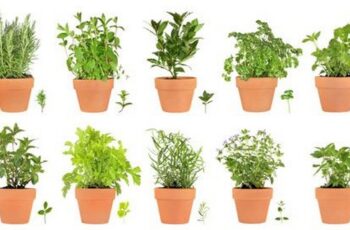Ad Blocker Detected
Our website is made possible by displaying online advertisements to our visitors. Please consider supporting us by disabling your ad blocker.
We have two multiplication techniques for this species of bushes, they can be by seeds or cuttings, in this section we will explain how to do each one so you can plant all the bushes you want from home or if you want to market them, here you will have the necessary information.
cuttings
As for the multiplication by cuttings, we have that they are those that are given by the stems of the plants, therefore, in the months of May or August you can remove the cuttings that are in the lateral branches, these must measure from about 8 to 10 centimeters long.
To do it correctly, you must make sure that the cut you make is oblique, as this allows for a better rooting surface and prevents the accumulation of water. You must choose the sharpest knife you have, thus avoiding more tissue than necessary.
In addition, the knife must be cleaned and disinfected to prevent tissue infection. The part that you cut you can put on it a specialized powder to favor rooting, after this you only have to place the cuttings on the selected plateau by first making holes with a pencil, the land where you are going to place it must be made up of fertile substrate and coarse sand in equal parts both, then you can place the cuttings very carefully.
After the implantation of the cuttings, you must wet the soil being careful not to do it in the green areas, and cover the plateau with a transparent plastic cloth or if you do not have this you can use a bag the idea is to place it in the form of a hood on the plant, you must locate the plant in an area where there is shade and the temperature is approximately 21 ° C.
During the remaining days, you should replace the bag every so often to control the humidity until you see that the cutting has formed roots.
Seeds
On the other hand, the multiplication by seeds is done in the middle of spring by distributing all the seeds in a seed substrate, as these are too small to bury you cannot use your hands to do it with a flat piece of wood. Then, you should moisten the soil enough with a sprayer preferably so you will have a more uniform finish, the tray in which you have the soil should also be covered with plastic to prevent the soil from drying out quickly.
As with cuttings, the tray should be located in a place where it is shaded and the temperature is around 24° C. Until germination is achieved, you should remove the plastic every day in a bright area that does not affect it. Give it direct sun, then when sunset comes, place the plastic again like this until germination has been achieved.
More about the plumbago
This shrub, originating in South Africa, offers a very beautiful flowering during a good part of the year.
The blue of its flowers is particularly remarkable and appreciated.
You will install it in your garden if the climate allows it because be careful, the plumbago fears frost if the temperatures are permanently below 0°.
But it adapts particularly well to pot culture, which will allow you to bring them to a cool place sheltered from extreme cold during the winter.
Finally, if you want to make it a climbing plant, you can trellis it by fixing it to the support because it does not cling on its own.
In our latitudes and grown in pots, the plumbago will reach 1 to 2 m in height against 4 to 5 m in its natural environment.

